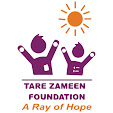The largest slum in Kenya where people were desperately gathered during a giveaway of flour and cooking oil resulted in a stampede that injured many and killed two people. In India thousands of migrants and daily wage workers line up to collect free meals that are being distributed to not let them go hungry as they have lost their livelihood. In Colombia poor households hang red clothes indicating that they are hungry.
The COVID-19 pandemic has resulted in hunger for millions of people across the world burdened with National lockdowns and a social distancing norm has caused the source of income to be diminishing that may also result in decrease of agriculture production keeping the stakes of millions of people that might go hungry day by day. The coronavirus has affected both the rich and poor but large segments of poor nations are going hungry and facing starvation.
Arif Husain who is the Chief economist at the World Food Program which is a part of the United Nations Agency states that there were 135 million people who had been hungry before but due to this pandemic the possibility of 130 million more people could go hungry. Altogether an approximated 265 million people could undergo starvation by the end of year 2020.Mr. Husain said. “It wasn’t a pretty picture to begin with, but this makes it truly unprecedented and uncharted territory.”
The world has witnessed severe hunger before due to extreme weather, economic downturns, wars and political instability. But this hunger crisis due to the pandemic is of global nature resulting in loss of income of millions who had been living to make ends meet. The list can increase considering drying up of income from tourism, overseas workers not having the money to send back to their home, small businesses and so on. Protests and looting have started due to hunger and frustration across the world.
Schools being shut down around 360 million children have lost their meals that they receive by going to school. Countries that rely on imports will be affected drastically because the problem of transporting food could be a limiting factor. Counties that are labour intensive can make their supply chain more vulnerable because of the norms of social distancing that need to be followed.
Countries like Sudan and Zimbabwe that were struggling before an outbreak may continue to struggle even more because of the economic setback. Iran had been using oil revenues to get goods like food and medicines for their country. In Venezuela which has been already facing the world’s largest economic collapse outside wartime could face even more devastation. In India uncertainty over food is also increasing where daily wage workers consider hunger to be of immediate threat than the virus. Since wages have dried up, half a million people have started walking to their hometowns resulting in India’s largest mass migration since independence.
Refugees and people living in conflict zones are likely to be hit the hardest. The curfews and restrictions on movement are already devastating the meagre incomes of displaced people in Uganda and Ethiopia, the delivery of seeds and farming tools in South Sudan and the distribution of food aid in the Central African Republic. Containment measures in Niger, which hosts almost 60,000 refugees fleeing conflict in Mali, have led to surges in the pricing of food, according to the International Rescue Committee.
Many countries that have been going hungry there is a concern that shortage in food can result in food discord. One such incident is that in Colombia residents have started to block roads in order to bring attention to the shortage of food. Charitable food giveaways can also expose people to viruses. But the government has been fixing prices on food and also been delivering free food. And communities across the world are taking matters in their own hands by raising money through crowdfunding and others have started programs to buy meals for the needy households.
.







0 Comments